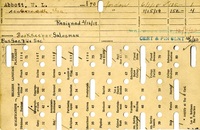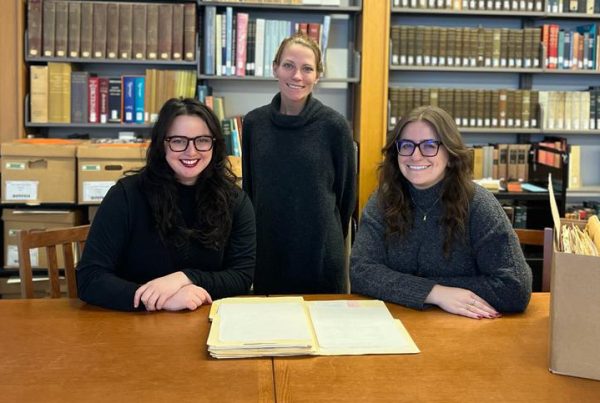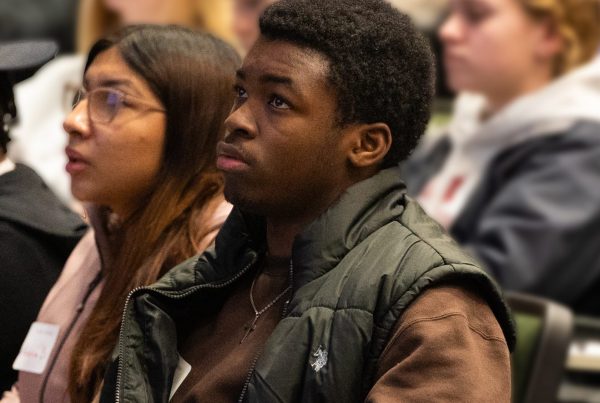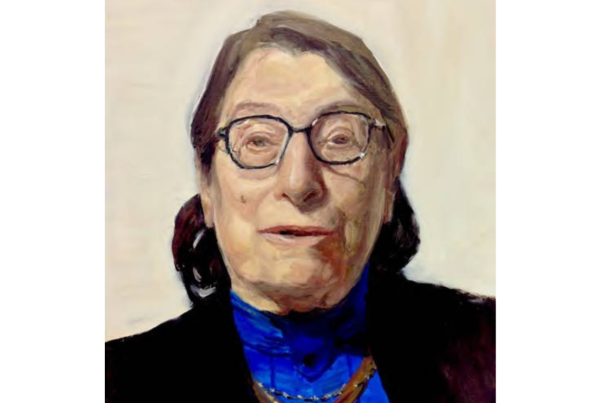By Ellen Engseth, Curator of Immigration History Research Center Archives and Head, Migration and Social Services Collections
Joining the staff of Archives and Special Collections a few months ago, I have the welcome charge of exploring the contents of four archives, or what we call units. These are the Berman Upper Midwest Jewish Archives (UMJA), the Kautz Family YMCA Archives, Immigration History Research Center Archives (IHRCA), and Social Welfare History Archives (SWHA). The Migration and Social Services Collections is a new administrative construct which includes these four units; individual archives remain distinct within it. Because these four archives complement one another so well, we have an exciting future working with each other to benefit our users, the collections, and staff.
 Though I haven’t yet had the time to physically explore the collections, I have been learning from my knowledgeable colleagues and reading our collection descriptions. I am repeatedly struck with how the sources in each of these units are global in scope, though at first glance it might not appear so. For example, a current favorite collection from the YMCA of the USA’s Archives, fondly termed “the punch cards,” uniquely informs us of Americans serving the final year of WWI in various YMCA non-combatant roles, largely in the European theater. The Y’s International Division records contain source material on countries from Angola to Zimbabwe. The rich and deep collections of the IHRCA document among other things the relationships, travels, and culture of migrating people moving across the globe. UMJA’s collection also share the story of migrating people, those identifying with a specific culture or religion and who moved to or through the upper Midwest region of the U.S. The SWHA includes an important collection: the records of the International Social Service, USA Branch, an organization which promotes professional and legal social work practices across national borders. As noted in the finding aid, “[the] records reflect human needs and social services in areas undergoing war, enforced migration, or other crisis as well as peacetime social and family services worldwide. In particular, the records deal with methods and problems in international adoption.” I am both humbled and excited to begin working with all of these materials that help us in the world understand each other better.
Though I haven’t yet had the time to physically explore the collections, I have been learning from my knowledgeable colleagues and reading our collection descriptions. I am repeatedly struck with how the sources in each of these units are global in scope, though at first glance it might not appear so. For example, a current favorite collection from the YMCA of the USA’s Archives, fondly termed “the punch cards,” uniquely informs us of Americans serving the final year of WWI in various YMCA non-combatant roles, largely in the European theater. The Y’s International Division records contain source material on countries from Angola to Zimbabwe. The rich and deep collections of the IHRCA document among other things the relationships, travels, and culture of migrating people moving across the globe. UMJA’s collection also share the story of migrating people, those identifying with a specific culture or religion and who moved to or through the upper Midwest region of the U.S. The SWHA includes an important collection: the records of the International Social Service, USA Branch, an organization which promotes professional and legal social work practices across national borders. As noted in the finding aid, “[the] records reflect human needs and social services in areas undergoing war, enforced migration, or other crisis as well as peacetime social and family services worldwide. In particular, the records deal with methods and problems in international adoption.” I am both humbled and excited to begin working with all of these materials that help us in the world understand each other better.
 On a more local and personal note, I’ve discovered that during the first half of the 20th century my extended family lived quite close to the Andersen Library building. In 1920, Grandma Dorothy played basketball at the Pillsbury House, one of Minneapolis’ many settlement houses. Happily for me, the SWHA holds the records of the Pillsbury Waite Neighborhood Center records. I look forward to finding a photo or her name in a ledger, to learn more about the role Pillsbury House played in her life, and by extension in the lives of many others.
On a more local and personal note, I’ve discovered that during the first half of the 20th century my extended family lived quite close to the Andersen Library building. In 1920, Grandma Dorothy played basketball at the Pillsbury House, one of Minneapolis’ many settlement houses. Happily for me, the SWHA holds the records of the Pillsbury Waite Neighborhood Center records. I look forward to finding a photo or her name in a ledger, to learn more about the role Pillsbury House played in her life, and by extension in the lives of many others.
See you in the Reading Room! Or please visit the Migration and Social Services Collections, all on the 3rd floor of Andersen Library.
Photo of Pillsbury House basketball team, used courtesy of Ellen Engseth.




